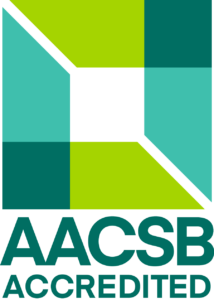Business Economy
- Credits: 6
- Ending: Examination
- Range: 2P + 2C
- Semester: summer
- Year: 2, 3
- Faculty of Economic Informatics
Teachers
Included in study programs
Teaching results
Knowledge:
• A comprehensive view of the enterprise and its economic activity through the definition of its transformation process with special attention to the analysis of the enterprise production factors, enterprise activities and value relationships.
Competence:
• critically evaluate the course and specifics of the business transformation process in individual types of enterprises according to the nature of their business,
• characterize the essence and evaluate the use of enterprise production factors with impact on the value processes of the enterprise,
• propose solutions and defend conclusions or recommendations to increase the efficiency of business operations.
Skill:
• perform basic business analyses in the field of human resources, with particular attention to monitoring labour efficiancy indicators,
• perform calculations to evaluate the use of non-current and current assets of the enterprise and evaluate the results obtained,
• perform basic business analyses in the area of corporate activities,
• perform basic business analyses in the area of value processes.
Indicative content
Thematic definition of lectures:
1. Enterprise transformation process.
2. Human resources of the enterprise.
3. Staff remuneration.
4. Labour productivity.
5. Assets of the enterprise.
6. Disposal of non-current assets, effect of residual value on profit or loss.
7. Current assets nature, structure, cycle and turnover.
8. Costs of the enterprise.
9. Costs during the transformation process of the enterprise.
10. Purchase of material inputs.
11. Production activity of the enterprise.
12. Selling products, the nature and tasks of sales, market research.
13. Financial management of the enterprise.
Thematic definition of exercises:
1. Classification of production factors.
2. Determination of the need for workers.
3. Calculation, prerequisites for introduction, advantages and disadvantages of time, piece rate and provision wage.
4. Determination of labour productivity.
5. Valuation and depreciation of assets under the Income Tax Act.
6. Static and dynamic structure of current assets.
7. Calculation and evaluation of indicators of the use of non-current and current assets.
8. Impact of capacity utilisation on total costs.
9. Break-even point analysis and its use in managerial decision making.
10. Balancing purchasing needs.
11. Semester knowledge check.
12. Turnover dynamics.
13. Calculation of profitability and liquidity ratios.
Support literature
1. BAYE, Michael - PRINCE, Jeffrey T. Managerial Economics & Business Strategy (Mcgraw-hill Series Economics). New York : McGraw-Hill Education, 2017. 548 s. ISBN 978-1259251382.
2. GAJDOVÁ, Denisa - KRIŽAN, Martin. Enterprise and Business Economics. Vydavateľstvo EKONÓM, 2016. ISBN 978-80-225-433-0.
Syllabus
Thematic definition of lectures: 1. Enterprise transformation process. Gutenberg's approach of measurable value, elements, phases and spheres of the transformation process. Porter's approach to primary and cross - cutting business activities. The importance of individual activities for selected objects of business. Links between the activities of the enterprise transformation process: value, material and information; horizontal and vertical. Enterprise production factors according to G. Wöhe. Classification and combination of enterprise production factors. 2. Human resources of the enterprise. Selection of workers as a factor influencing the result of work. Creation of optimal working conditions and enterprise social services, their impact on worker performance. 3. Staff remuneration. The broader and narrower contexts of payroll formation. Selected parts of labour legislation. Principles of remuneration. Forms of wages, advantages, disadvantages, wage structure. 4. Labour productivity, nature and indicators of labour efficiency, factors of labour productivity growth. Analytical decomposition of labour productivity, evaluation of labour productivity relations with selected enterprise indicators. 5. Assets of the enterprise, nature and classification of assets. Non-current assets, classification, valuation for tax and accounting purposes, procurement, depreciation and the effect of depreciation on the economic results of the enterprise, depreciation policy of the enterprise. 6. Disposal of non-current assets, effect of residual value on profit or loss. Use of non-current assets, utilisation indicators. 7. Current assets nature, structure, cycle and turnover. Normalization of current assets and the use of norms for economic decision-making. Indicators of current asset utilisation. 8. Costs of the enterprise, the nature, dimensions of accrual and material differentiation of costs, expenses, revenues and income. Costs of entry into the transformation process and relevance to managerial decision making. 9. Costs during the transformation process of the enterprise. Definition of the items of the costing formula and the importance of this cost classification for economic decision making. Costs at the output of the transformation process, approaches and classification and use. Possibilities of using break-even point analysis for economic decision making. The importance, possibilities and means of reducing the costs of the enterprise. 10. Purchase of material inputs. Organisation, marketing and planning of material input purchasing. Inventory management of material inputs. Evaluation of the level of inventory management. 11. Production activity of the enterprise, production process and its division, production planning and production capacities. Production process of a non-manufacturing enterprise. Innovation and product creation. 12. Selling products, the nature and tasks of sales, market research. Product, contracting, communication and distribution policy of the enterprise. 13. Financial management of the enterprise, its nature, task. Financial objectives, recording and management of the structure of financial resources and productive use of the company's assets. Information obtained from the financial statements. Cash flows of the enterprise. Thematic definition of exercises: 1. Classification of production factors. Combination of production factors of a manufacturing and non-manufacturing enterprise. 2. Determination of the need for workers by the method of standard hours, the method of service standards and the places served in connection with decision-making on measures aimed at rationalising the number of workers. 3. Calculation, prerequisites for introduction, advantages and disadvantages of time, piece rate and provision wage. Supplementary forms of wages. The price of work. 4. Determination of labour productivity and assessment of this indicator in relation to the indicators of the efficiency of assets and the equipment of workers with assets, the enterprise imbalance, measures aimed at maintaining the desired proportions between these enterprise indicators. 5. Valuation and depreciation of assets under the Income Tax Act, under the Accounting Act, assessment of the excess component and its impact on the tax base. Criteria for the selection of depreciation methods in relation to the objectives of the company's depreciation policy. Depreciation calculations and their significance. 6. Static and dynamic structure of current assets. Normalization of current assets: normalization of production inventories, work in progress and finished goods. 7. Calculation and evaluation of indicators of the use of non-current and current assets. Management of current assets. 8. Impact of capacity utilisation on total costs. Response coefficient, interpretation of its value. Decision-making on the increase of production volume in relation to cost efficiency indicators. 9. Break-even point analysis and its use in managerial decision making. 10. Balancing purchasing needs. Planning, determining and deciding on the size of supplies. Determining signal inventory levels. 11. Semester knowledge check. Calculation of production capacity and the impact of its use on the economic results of the enterprise. 12. Turnover dynamics. Pricing methods: cost-based, demand-oriented and competition-oriented. Price elasticity. Choice of communication mix. Sales channels. 13. Calculation of profitability and liquidity ratios. Calculation of cash flow through direct and indirect method.
Requirements to complete the course
30 % continuous written work, 70 % written examination
Student workload
156 h (attendance at lectures 26 h, attendance at seminars 26 h, preparation for seminars 26 h, preparation for credit test 26 h, preparation for exam 52 h)
Language whose command is required to complete the course
Slovak
Date of approval: 11.03.2024
Date of the latest change: 14.05.2022

